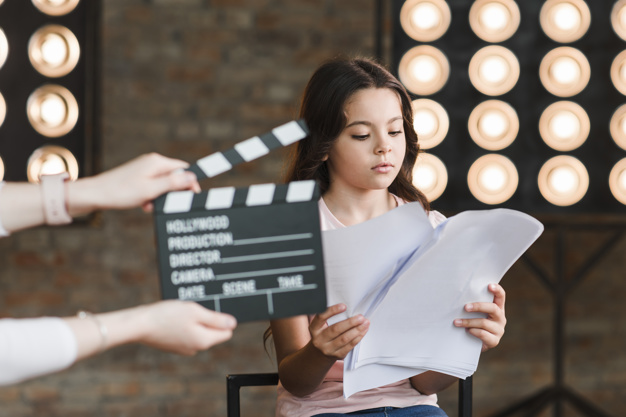What is it called when actors don’t use a script?
Exploring the art and impact of improvisation in acting
(By Carmichael Phillip)

What Does It Mean When Actors Don’t Use a Script?
When actors perform without a predetermined script, the technique is referred to as improvisation, often shortened to improv. Improvisation is the process of spontaneously creating dialogue, action, and emotion without relying on a written screenplay or script. This method requires quick thinking, creativity, and a strong understanding of character development and narrative structure.
Improvisation is a well-respected and often challenging facet of acting, utilized in theater, film, and television. It may be fully unscripted or partially guided by prompts, scenarios, or outlines.
A Brief History of Improvisation in Acting
Improvisation has ancient roots, dating back to Commedia dell’Arte in 16th-century Italy. Traveling performers would use stock characters and loose storylines to entertain crowds, crafting dialogue and physical comedy on the spot.
In the 20th century, improv gained formal structure through pioneers like Viola Spolin, who is often called the mother of modern improvisational theater. Her games and exercises laid the foundation for groups like The Second City and The Groundlings, which became breeding grounds for legendary comedic talent.
Why Do Actors Improvise?
There are several reasons an actor might perform without a script:
- To enhance realism: Improvised dialogue can sound more natural than scripted lines.
- To explore character: Actors may use improv to delve deeper into their character’s mindset.
- To troubleshoot a scene: Directors might use improv when a script isn’t working.
- To generate new content: Writers and directors sometimes build entire films from improvised scenes.
Improv allows for spontaneity and authenticity that can’t always be captured through rigid scripting.
Famous Improv Moments in Film
Many iconic movie lines and scenes were born from improvisation. Here are a few standout examples:
- “You’re gonna need a bigger boat” – Jaws (1975): Roy Scheider improvised this line, and it became one of the film’s most memorable quotes.
- “Here’s looking at you, kid” – Casablanca (1942): Humphrey Bogart’s delivery was unscripted, adding timeless charm to the scene.
- The chest-beating chant – The Wolf of Wall Street (2013): Leonardo DiCaprio and Matthew McConaughey improvised this now-iconic moment.
- The interrogation scene – The Dark Knight (2008): Heath Ledger’s unpredictable Joker behavior led to organic reactions from Christian Bale.
- Bill Murray’s lines – Ghostbusters (1984): Much of Murray’s dialogue was improvised, injecting comedic spontaneity into the film.
Television and Improv: When Scripts Get Loosened
Improv isn’t just for movies. Many television shows, particularly comedies, incorporate unscripted moments:
- Curb Your Enthusiasm: Entirely outline-based, with actors improvising every line.
- The Office (U.S.): Several key scenes, including Jim’s pranks and Michael’s antics, were improvised by the cast.
- Parks and Recreation: Many of Andy Dwyer’s funniest lines were made up by Chris Pratt.
- Whose Line Is It Anyway?: A game show based entirely on improvised sketches and songs.
Improv in TV can bring a level of relatability and humor that scripted content sometimes lacks.
Training for Improvisation
To perform convincingly without a script, actors often undergo specialized training. This includes:
- Improv classes offered at acting schools or local theaters.
- Workshops led by experienced improv professionals.
- Participation in improv troupes like The Second City, UCB (Upright Citizens Brigade), or The Groundlings.
Training focuses on listening skills, adaptability, character creation, and team-based performance.
Rules of Effective Improvisation
Though improv is unscripted, it follows certain guiding principles:
- “Yes, and…”: The golden rule of improv. Accept what your scene partner offers and build on it.
- Stay in character: No matter where the scene goes, remain true to your role.
- Support your partners: Good improv is about collaboration, not competition.
- Keep it moving: Don’t stall or overthink. Momentum is key.
- Listen actively: Pay attention and respond genuinely.
These rules help create engaging, coherent, and respectful scenes.
When Improvisation Goes Wrong
Improvisation doesn’t always land perfectly. When done poorly, it can lead to:
- Scenes that lack focus or drag on unnecessarily.
- Confusion among cast members unsure of where the scene is heading.
- Breaks in tone that clash with the rest of the performance.
It takes talent and experience to improvise well. Even the best actors sometimes misfire, but when successful, improv can elevate a scene dramatically.
Improvisation in Theater
In live theater, improvisation is often used to:
- Handle unexpected events, like a missed cue or forgotten line.
- Engage audiences in interactive performances.
- Explore new plays and develop characters during rehearsal.
Some performances, like long-form improv shows, are entirely unscripted from beginning to end, creating a unique story every night.
Improv and the Audience Connection
One of the greatest strengths of improvisation is its ability to create a genuine connection with the audience. When actors improvise, they’re responding in real time, which can:
- Heighten emotional authenticity.
- Provide unexpected humor.
- Deliver spontaneous magic that scripted performances sometimes lack.
Audiences often appreciate the skill and bravery involved in thinking on the spot.
Conclusion: The Power of Performing Without a Script
When actors perform without a script, they tap into one of the purest forms of creative expression: improvisation. Whether in comedic sketches, dramatic films, or interactive theater, improv brings a unique energy and authenticity to performance. From classic films to modern TV shows, unscripted moments have given us some of the most unforgettable scenes in entertainment history.
So next time you hear a clever line or see an unplanned moment on screen, you’ll know—it wasn’t in the script. It was the magic of improv at work.




